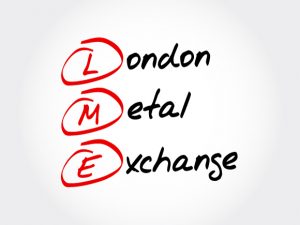MetalMiner Q&A: LME nickel turmoil, volume volatility and what’s next for the exchanges
The MetalMiner team has broken down the significant fluctuations in the LME nickel contract this month.
But now that a few weeks have passed since the LME first suspended trading, it’s time to take a look at some other interesting trends at play on the LME and elsewhere.
In this question-and-answer session, MetalMiner’s Stuart Burns will weigh in on volume dips on the LME, the fallout from this month’s decisions to suspend trading of the nickel contract and much more.
As always, the MetalMiner team will continue to break down these issues and more in the MetalMiner weekly newsletter.
LME vs. SHFE
Three LME contracts — nickel, aluminum and copper — have all lost liquidity/volume of late. Meanwhile, the SHFE has seen increases for nickel and aluminum. COMEX seems to be the winner on copper. Has the nickel debacle hurt the LME’s credibility such that the market has moved to alternative exchanges and does this pose an existential threat to the LME?
The threat to the LME’s dominance in nickel was a point I raised last week in a post, and I agree is a valid one.
The SHFE continued to trade while the LME was closed (a point not lost on the market needing to hedge exposure). While it didn’t suffer the volatility of the LME — the shorts were nearly all on the LME, not the SHFE — the significance of having an exchange still trading while the LME was “away” can only have encouraged investors and trade to “dual source” and consider both exchanges in the future.
How this will look in 12-24 months remains to be seen. However, the situation is clearly positive for the SHFE and negative for the LME. Of that there is no doubt.
As we continue to monitor volumes and prices on the respective exchanges, the MetalMiner Insights platform features metal price data for both LME and SHFE nickel.
The dollar’s place
Further to that point, if volume and market liquidity move to the SHFE, does that pose a risk to the value of the dollar as the world’s reserve currency. Could this hasten the toppling over of the dollar as the world’s reserve currency?
There would only be a threat to the dollar if there were a viable alternative. Currently, there isn’t one.
The euro and yen are nowhere near as widely used. Furthermore, the RMB is a fraction of dollar trades.
Does it bring the date forward from 2075 to 2050? Maybe it helps contribute to an earlier loss of reserve status for the dollar. However, oil and most agriculturals remain in dollars and will do so for the vast majority of trades.
Saudi Arabia’s possible acceptance of RMB for its oil sales to China will result in a bilateral trade flow as the only place they can use them is buying stuff from China. That has its limitations when your whole economy relies on Western technology and equipment.
In addition to analysis and forecasting for 10 metal groups, the MetalMiner Monthly Metal Outlook (MMO) also features analysis of other factors relevant to metals markets, including currencies, oil prices, policy developments and much more.
What’s next for the LME?
Nickel liquidity/volume has nosedived at the LME. Will this be permanent? Temporary? What must the LME do to right its ship? Is there a real risk of some of its most lucrative contracts moving to other exchanges?
The trade still needs to hedge and they will come back to the LME.
Investors or speculators may be burned. Ultimately, they will come back.
Following on from the first question above, though, they may be tempted to spread bets across the SHFE. The two markets are driven by separate dynamics, though, so they are not simply geographically displaced equivalents.
If your investment strategy is driven by a perception of European supply and demand, it may not play out the same on the SHFE. The SHFE is driven by Asian supply and demand — specifically, Chinese supply and demand.



Leave a Reply